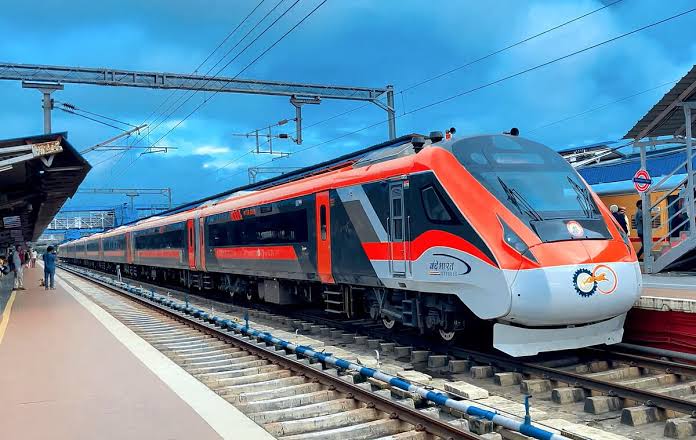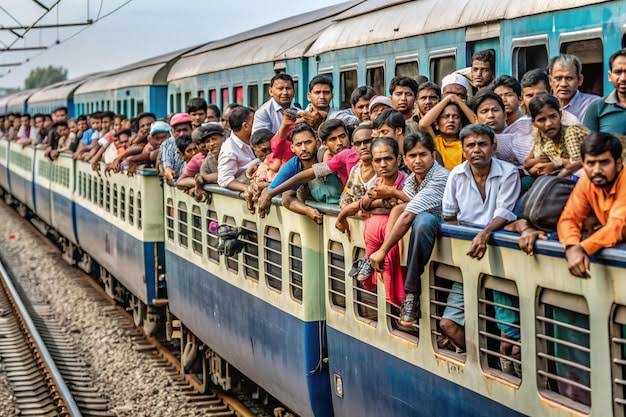There has been a decline in rail accidents per million train kilometre, officials of the Railways ministry, in India, including the chairman of the railway board, told the department-related standing committee on Tuesday.
The committee was being chaired by BJP’s Lok Sabha MP CM Ramesh and was examining the crucial subject of railway safety.
Payal Mehta of News 18.com reports that during the discussion, many Members of Parliament wanted to understand from the Railways the update about the number of accidents that have taken place recently, and what steps the Railways is taking to minimise the same.
In a presentation, the officials said there was a “decline in Accidents Per Million Train Kilometre (APMTK), an index of safety performance of Railway system”. They added: “It has reduced from 0.65 in 2000-01 to 0.03 in the year 2023-24.”
The officials are said to have told the members present that safety of passengers has been the priority of the government.
Other questions that MPs sought information on included the attempted cases of sabotage and the recent number of attempted accidents. The officials told the panel that they would respond in writing within the next 15 days.
In their presentation before the panel, the Railways detailed the steps that have been taken to protect passengers and railway infrastructure. Crucial among these include development of robust infrastructure, timely maintenance of existing infrastructure, training of manpower, use of state-of-the-art technology to reduce human errors, and timely review of safety performance.
Of late, the Railways have been hit by a series of derailments, with the possibility of sabotage being investigated by various agencies across the country.
In terms of the work that has been done to enhance passenger safety recently, the following steps were listed:
Tracks and bridge maintenance
Monitoring of track parameters done through regular runs of Track Recording Cars (TRC). In 2022-23, two more TRCs were added whereas seven more are under procurement. These TRC targets are to be increased in 2023-24 by at least 10 per cent of the original target, the government has told the committee.

Timely review to check the health of the bridges has been undertaken by the ministry on a timely basis. This is especially crucial during pre-monsoon and post-monsoon times. Underwater maintenance is also undertaken using technology. At present, 1,63,810 bridges — both big and small — have been reviewed, the panel was told.
Level crossing gates
A total of 11,062 Manned LC (MLC) Gates have been interlocked with signals on 8G Routes, and further, 90 LC gates have been interlocked in 2024-25 as on August 31, 2024, the panel was informed by ministry of railways.
Fire-safety measures
A number of vital steps have been taken by the railways to ensure that passenger journey is free of fire accidents. This includes the placement of fire-safety equipment in all the coaches, smoke detectors in coaches, using fire-resistant furnishings in the coaches, and cooking in a non-flame kitchen using electronic appliances.
Steps to reduce human error
Specific steps have been taken to ensure structured service training is given to all those involved in the running of the train. Simulator-based training is given to loco pilots to help improve driving skills and reaction time. Training is also imparted for practical situations. For instance, in case of fire, they are taught how to use fire equipment and carry out evacuation of passengers on priority. More than six lakh railway employees were imparted training during the year 2023-24, the ministry said.
The ministry also said up to August 10 this year, air-conditioned cabins had been provided in locomotives. All the running rooms have been mandatorily made AC rooms. Yoga and meditation sessions have also been conducted on a timely basis to act as stress-reliever for those in high-pressure jobs, the panel has been informed.
With the winter season approaching, fog has resulted in the delay of trains and probably the possibility of derailments, especially in the northern part of the country. For this, 21,742 GPS-based Fog Pass devices have been provided to loco pilots which will help them navigate through the fog and know the approaching signals, gates etc.
Vigilance Control Devices (VCD) have been provisioned to improve alertness. In this case, an alarm rings if the loco pilot does not take any action for 60 seconds, the government has told the standing committee.
Raising the speed of trains is a priority for Indian Railways, which is looking to introduce a number of semi-high speed and high-speed trains on its network. One of the crucial factors for increasing the speed of trains beyond 110 kmph necessitates provision of safety fencing all along the track to avoid any infringement to moving trains by animals, two-wheelers etc.
“Old practice of construction of fencing at Railway boundary was not, at times, found very effective in preventing cases of cattle run over by trains. W-Beam type metal fencing has been developed and being provided on Ahmedabad- Mumbai route, where sectional speed is being raised to 160 kmph,” a source said the committee was informed.
Besides the metal fencing, Indian Railways is also providing other innovative designs of fencing for proliferation over the Indian Railway network. Also, provision of pedestrian subways on the routes provided with fencing are also being made to allow crossing of cattle, two-wheelers and pedestrians at identified locations.
With this, Indian Railways aims at safe operation of trains at speeds of 130 kmph and 160 kmph. Umbrella provision for fencing in this year’s budget is Rs 479 crore. A total of 26,134 kilometres fencing has to be done and, till date, 6,547 kilometres are complete.
The panel, which consists of many new members, requested the chairman to continue with the discussion on this vital issue in the next few meetings.













